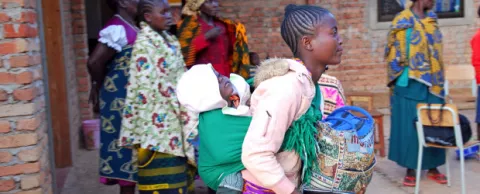
Tanzania has one of the highest rates of heart-related infant mortality in the world, but the country could dramatically reduce the number of deaths, even if it can’t get more medical specialists to work there.
Council Lead Partner Cisco says the country could one day be a shining example of what’s possible through the Internet of Things, a progressive approach where an ever-growing array of devices are connected to the Internet. While it’s more commonly used make various systems work in harmony – think congestion sensors and traffic lights – Cisco says it could also help doctors work better together, saving lives in the process.
And the same thinking that can solve a shortage of medical specialists can also be used to improve productivity by reducing traffic. Or improve living standards by improving access to information. The Internet of Things involves more than just plugging devices in; it involves realizing that everything can be truly connected.
Stretching valuable health care resourcesCisco found that for 80% of what goes on in a doctor visit, the physician doesn’t have to be there at all. Analyzing test results and vital signs, ordering new tests, reviewing a patient’s history – they are all tasks that could be done from anywhere. The remaining 20% could be handled by a medical assistant or a doctor with less specialized training.
In Tanzania, online medical records, Internet-connected monitoring equipment, and video conferencing could replace the need for the specialist to even be in the same room as the patient. The specialist could be anywhere. And they could also help patients in India or rural Mexico without needing to travel.
Practicing what it preaches
Cisco’s own office in Bangalore, India is a showcase of the possibilities. The company’s chief globalization officer describes the office as a smart city unto itself – one that’s even more advanced than the company’s San Jose headquarters.
The smart systems driving the office help make sure no space is wasted. As employees head to the office, they can see what workspaces are available and check them out like a library book. When they do, the workstation automatically configures itself to the employee’s saved preferences, including lighting level, temperature and phone settings. When the employee is done with the space, they check it back in and make it available to the next person.
Online meetings are another major component. The CEO maximizes his time and his employees’ time by allowing them to meet online at set times wherever they are. These virtual meetings also make the company much more responsive to customers. It was able to fix a datacenter problem for a client during an online meeting, getting the client back online quickly and eliminating travel time.
Starting with Goldilocks zonesAs Cisco works to transform cities, it starts with those that Goldilocks would like – not too large, not too small. An example of one is Kansas City, Mo., which is a large enough stage to develop concepts that can scale up to larger cities, yet small enough to make the necessary transformations efficiently. When completed, it would be Cisco’s largest smart cities deployment in the United States.
The company and city are quietly working on the blueprints for the smart city, planning to unveil them early next year. The new systems would be in place within a year. A key piece of the project is a new Internet-equipped streetcar line, which will make it easier for both commuters and data to travel.
And perhaps due to Kansas City’s ideal size, even entrepreneurs are getting involved to dream up innovative solutions to problems, such as the reliability of the city’s water supply. The work that they do could also be applicable to other cities around the world.
A transformation in Africa
The Goldilocks approach may also be playing out in Africa where some countries are leapfrogging ahead of others. Rwanda, for example, was cited by the World Bank as a “smart country.” It has made massive investments in information and communication technologies, allowing people to better share knowledge, raising the standards for everyone.
During the recent Cisco Connect 2014 South Africa event, the company said the problems cities have are frequently related. But by focusing on just one problem at a time, they miss connections that allow them to truly make a transformation.
Opening data and lines of communication allows the public to get involved in crafting innovative solutions to real problems, such as short energy supplies and a lack of technical workers – issues that need to be solved quickly to keep pace with the increasingly urbanized world.
Often, Cisco says the technology is the easy part. The hard part is getting governments to want to push forward and remove obstacles.
More on the Internet of Things...
Connected Chicago catches crooks, controls rats
Internet of Things in action: 3 real-world examples from Europe
"Internet of School Things" aims to prepare students for the digital economy



